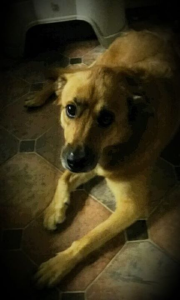Google Microchipping
 Your pet is a precious member of your family, so there’s no reason to leave his safety to chance. Whether it’s the fault of a missing collar or broken fence, accidents happen and thousands of pets end up missing every year. Brand new microchipping technology that we like to call the “Google Microchip” has revolutionized the pet recovery process to ensure that no dog or cat is ever missing for long.
Your pet is a precious member of your family, so there’s no reason to leave his safety to chance. Whether it’s the fault of a missing collar or broken fence, accidents happen and thousands of pets end up missing every year. Brand new microchipping technology that we like to call the “Google Microchip” has revolutionized the pet recovery process to ensure that no dog or cat is ever missing for long.
The Old Microchip System
Standard pet recovery systems utilize microchip numbers that can only be found in a microchip database. Illegible tags, tedious and exhausting searches through multiple databases, and outdated information frequently create obstacles in this system. It also requires a yearly fee, and failure to pay the fee renders the microchip useless.
The New “Google Microchip” From Save This Life
Save This Life, a group of former animal rescuers, recently developed a superior microchipping method that uses the power of Google to make the microchip information accessible to anybody in need.
Every Save This Life microchip is searchable on Google, so any person who finds a lost pet can simply type the microchip number into the search engine to uncover the phone number and email address of the pet’s owner. Similarly, the pet owner receives a GPS location of the person who found the lost pet. Save This Life even sends a free Lost Pet Alert to shelters and rescues within a 25 mile radius of the lost pet’s last known location.
Since the microchip is compatible with all scanners and designed to resist migration and maximize effectiveness, it’s a very reliable method to ensure your pet remains safe if he manages to run off. Better yet, there are no yearly fees after the initial payment for insertion of the microchip!
Even dogs and cats with old chips can still benefit from this new system. Simply bring your pet in to us, and we will help you to register within the system so you can obtain an aluminum tag with the Save This Life chip number to be used on Google. Even if the tag is missing, the chip can still be scanned at an animal facility for the number.

